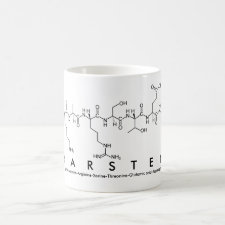
Authors: Beyazit S, Tse Sum Bui B, Haupt K, Gonzato C
Article Title: Molecularly imprinted polymer nanomaterials and nanocomposites by controlled/living radical polymerization.
Publication date: 2016
Journal: Progress in Polymer Science
Volume: 62
Page numbers: 1-21.
DOI: 10.1016/j.progpolymsci.2016.04.001
Alternative URL: http://www.sciencedirect.com/science/article/pii/S0079670016300041
Abstract: Since the pioneering work of Wulff and Mosbach more than 30 years ago, molecular imprinting of synthetic polymers has emerged as a robust and convenient way for synthesizing polymeric receptor materials bearing specific recognition sites for target molecules. The resulting materials, molecularly imprinted polymers (MIPs), are therefore commonly referred to as 'plastic antibodies'. They are obtained by polymerizing a scaffold around a target, or a derivate thereof, which acts as a molecular template. MIPs have been successfully applied in many areas including affinity separation, immunoassays, chemical sensing, solid-phase extraction, drug delivery, cell and tissue imaging, direct synthesis and catalysis. In terms of affinity and selectivity, MIPs are on a par with biological receptors like antibodies, and this is accompanied by a superior chemical and physical stability, compatibility with organic media, reusability, easy engineering and low cost. These advantages represent the main reasons for the wide interest raised around molecularly imprinted materials. Mainly produced by free radical polymerization (FRP) of vinyl monomers, MIPs have also taken advantage of the introduction of controlled/living radical polymerization (CRP) techniques, which have literally transformed polymer chemistry over the last decade. This review describes the advantages arising from the use of CRP in synthesizing MIPs, both in terms of sheer binding properties as well as for their remarkable potential for post-polymerization functionalization, for the synthesis of MIP nanomaterials and for the integration of MIPs into composites and hybrid materials. The benefits of using CRP are critically assessed with respect to the still largely applied FRP and guidelines are provided for choosing the most convenient technique to fit a specific targeted application of MIPs
Template and target information: Review - MIP nanomaterials
Author keywords: molecularly imprinted polymer, controlled, living radical polymerization, Nanocomposite, nanomaterial, surface functionalization



Join the Society for Molecular Imprinting

New items RSS feed
Sign-up for e-mail updates:
Choose between receiving an occasional newsletter or more frequent e-mail alerts.
Click here to go to the sign-up page.
Is your name elemental or peptidic? Enter your name and find out by clicking either of the buttons below!
Other products you may like:
 MIPdatabase
MIPdatabase









